Using the Compass, you learn to design and implement a pattern of competencies by keeping the six dimensions in an appropriately balanced composition and by ensuring that not one dimension gets lost.
Each dimension has its own dynamic and can be fostered and developed in many ways. With sufficient attention to each dimension, and ultimately to their togetherness, they mutually reinforce each others' strengths.
The purpose of the Collective Leadership Compass is not theoretical, but practical. It guides thought and action toward patterns of successful human interaction.
Each dimension is furthered deepened through three ‘Aspects’.
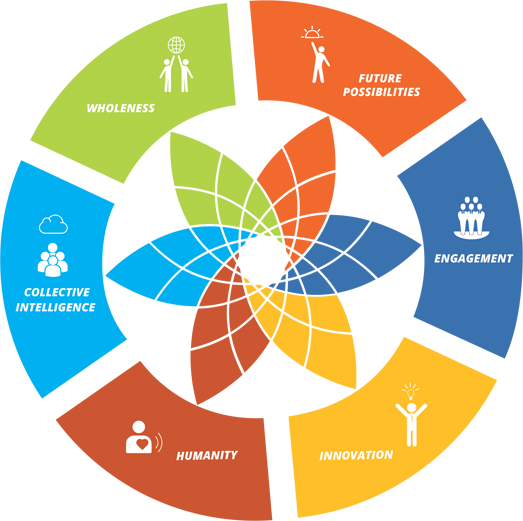
Challenging the impossible and always seeing new possibilities is a faculty that we can cultivate. Inspiring others to access their creative potential then naturally follows.
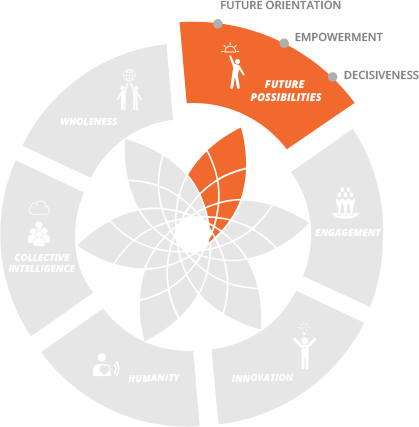
Leading collectively requires sensing into the future. New pathways open when we go beyond problem diagnosis and focus on how to improve a situation or endeavor. This means
Even the best of solutions and the greatest visions are futile if not enough people take them up. Change comes about fastest in a web of relationships between people who shape future collectively. If we are committed to making a difference, we need to engage. We can learn to make our co-creation more consciously sustainable.
Once people start supporting, support grows further and collective impact is possible. We have mastered the art of engagement when people commit. When they actively drive implementation new people ask to join the journey. This means:
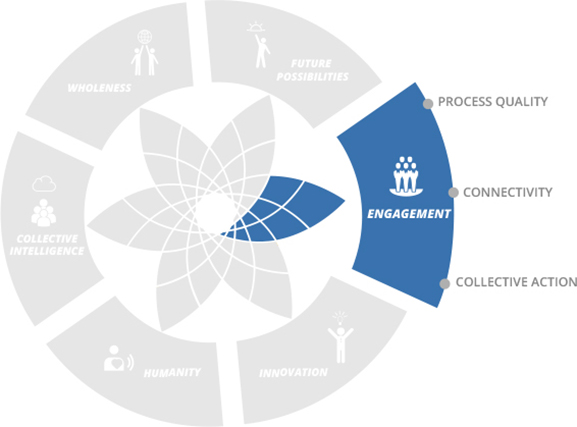
Sustainability requires innovation on a large scale – we cannot walk into the future with our minds focused on problems. We need to learn from the past, but if we limit ourselves to variations of existing solutions we try to overcome the challenges of sustainability with the very solutions that have led to these challenges.
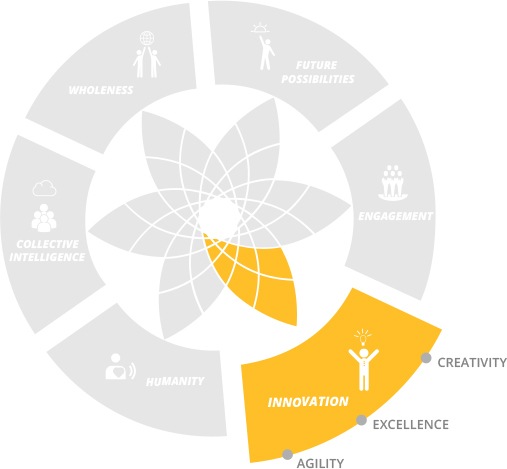
The challenges ahead cannot be addressed by singular solutions, territorial claims, and individual intelligence alone. Innovation is the successful implementation of new ideas in a collaborative approach; it turns our vision into reality. This means:
We need to create the capacity to access our own humanity with all potentials and limitations. Only then can we open up to the underlying humanity that connects us all in the world. No matter how much we differ in approach, opinion, culture, skincolor, skills or wealth.
Once we recognize our shared humanity, our collaborative journey becomes a process of unearthing our true nature in response to what needs doing in the world. This means:
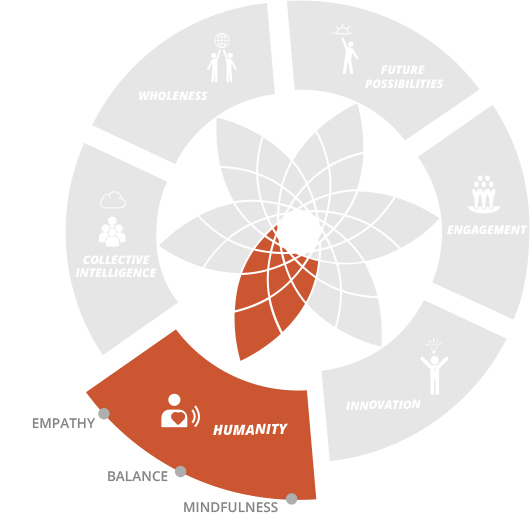
Grasping the web of relationships leads us to the realization, that we cannot travel the path towards sustainability alone. No matter how important our contribution may be, opening it up to collective intelligence is what will help make the difference.
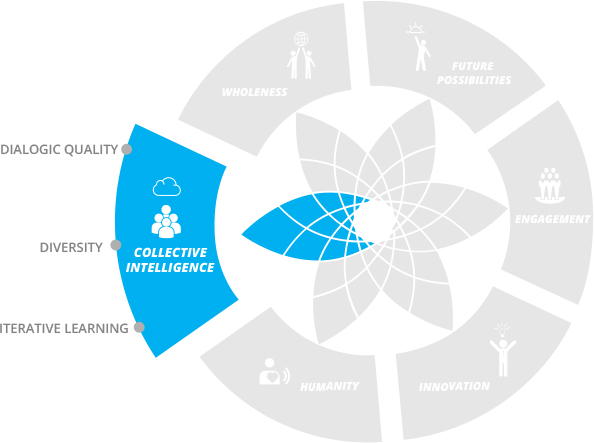
Life thrives on diversity, and so do human societies. Progress also comes from the human ability to differ. We enhance our competency in harvesting collective intelligence when we respect difference as well as invite diverse perspectives, experiences, and viewpoints. This means:
Building our capacity to sense the whole and look at a the larger system our transformation efforts are embedded in, leads us to not only conceptually understand the fact that there is interdependence in the world, but to grasp the web of interdependent relationships.
Attending to wholeness is more than seeing a collection of parts. The globalized world invites us to place our action for sustainability in a larger context. We can gradually understand that everything on our planet is interconnected and relax into the complexity, while navigating transformation collectively. This means:

Building a world that works for 100% of humanity and the planet requires us to scale-up
collaboration skills globally.
Become a change agent for transformation by navigating complex change collectively
- build a social enterprise, make your company more responsible, and navigate multi-stakeholder
collaboration to improve societies.
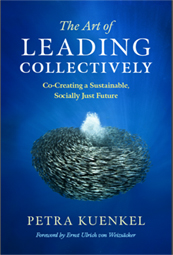
“Reading books can change our lives. Petra Kuenkel’s ground-breaking publications takes you onto a collaboration journey that will convince you that it is possible to shape our future collectively.”